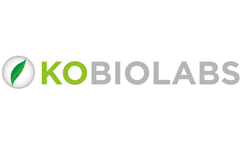Cytokine Release Articles & Analysis
12 articles found
The bone marrow megakaryocytes generate platelets that they release into the blood as cells without nuclei. A healthy person has (150-400)×106/mL platelets which make up around 5% of their total human cell count. ...
Also promoting the homing of stem cell membranes is the relationship between surface receptors (CXCR and CD74) and cytokines released by cancerous or inflammatory ...
Scientists are working tirelessly to mitigate side effects associated with treatments, such as cytokine release syndrome, and to overcome resistance mechanisms that leukemia cells can develop. ...
Upon activation, it potentiates the production of pro-inflammatory cytokines, such as tumor necrosis factor-alpha (TNF-α), interleukin-1 beta (IL-1β), and interleukin-6 (IL-6), thereby exacerbating the inflammatory cascade. ...
Compared with traditional chemotherapy and hematopoietic stem cell transplantation, it is more precise in killing tumor cells and significantly reduces toxic side effects while improving efficacy. Cytokines in CAR-T cell therapy Cytokines are pleiotropic and diverse, and enhancing T-cell activation signaling by transgenic expression of ...
Cytokines in Cytokine Release Syndrome (CRS) CRS, a systemic inflammatory reaction stemming from diverse triggers such as infections, autoimmune inflammation, and medical causes, involves various cytokine classes including inflammatory effectors, initiators, modulators, chemokines, and colony-stimulating factors. ...
Cytokine storm is also known as cytokine waterfall cascade, or hypercytokinaemia. ...
Second, blocking the pathway in liquid tumors may help to reduce the well-known toxicity of CAR-T cell therapy, namely cytokine release syndrome. Although CAR-T cell therapy has a cure rate of more than 40% for certain liquid tumors in some cases, toxicity is a real problem, and inhibition of interferon γ in these cancers may maintain efficacy but reduce ...
Since then, various immunotherapeutic studies have been conducted with the goal of reducing beta cell loss by focusing on critical immune cells implicated in the disease process and the cytokines they release. A variety of non-antigen-specific immunotherapies have shown promise in preserving beta-cell activity and even slowing T1D progression. ...
Considerable investment into cancer research has led to the development of remarkable new therapies, which have greatly improved therapeutic outcome for the countless individuals diagnosed with cancer. Until recently, almost all therapies that were granted clinical approval were small molecules. However, biotechnological advances in the last several decades have made it possible to develop ...
Further, it produces Th2-related cytokines and induces immunoglobulin (Ig)E isotype.4,5 Infiltration of inflammatory cells such as eosinophils and lymphocytes into skin lesions is regulated by Th2 chemokines6,7 and induced by IL-4, IL-5, and IL-13, potent eosinophil cytokines released from activated mast cells.4,8,9 In addition, Th2-derived IL-31 ...
What is autoimmune disease? Autoimmune disease a condition in which the body’s immune system mistakenly attacks the body itself. Thus far, more than 80 different autoimmune diseases have been identified, with some of the most prevalent including rheumatoid arthritis, Crohn’s disease, type 1 diabetes, and multiple sclerosis [1]. Autoimmune disease is one of the top ten causes of ...







